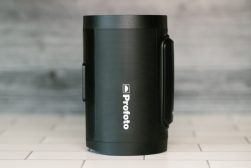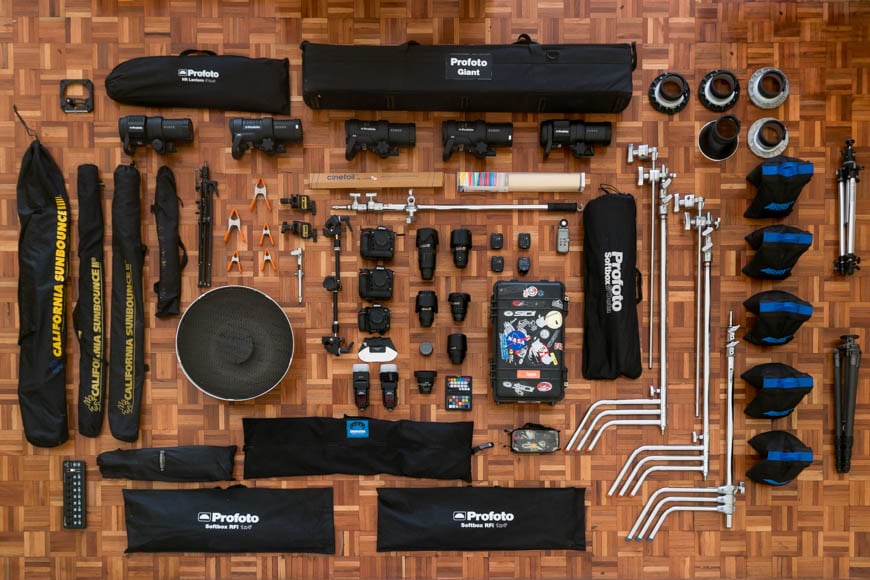
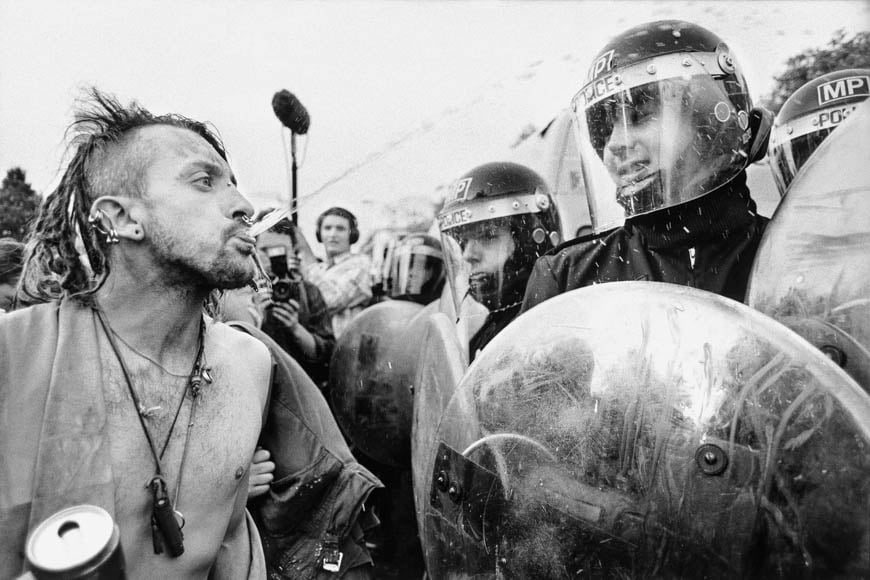
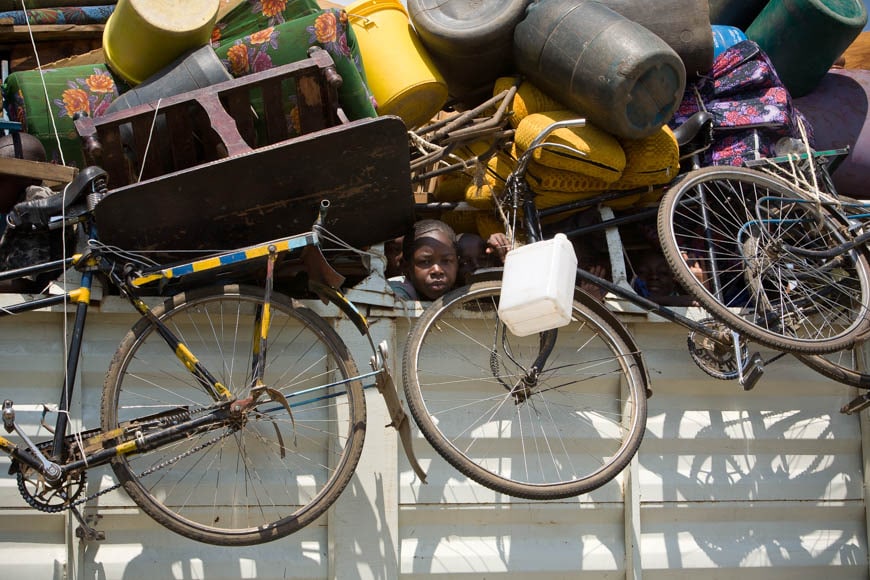
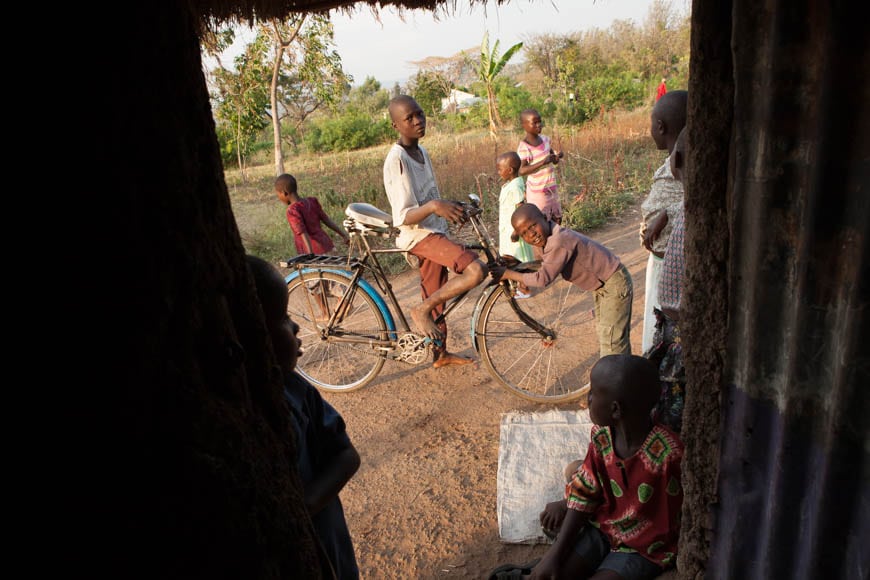

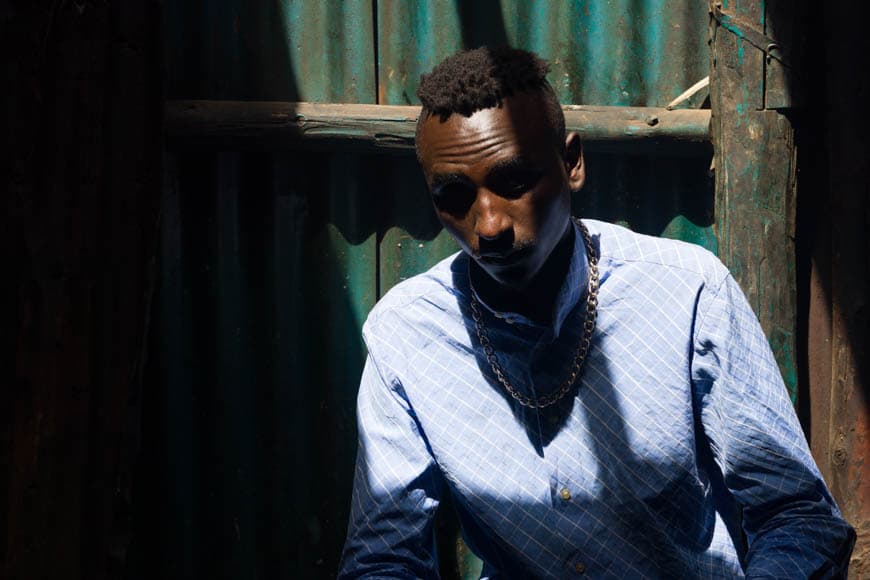

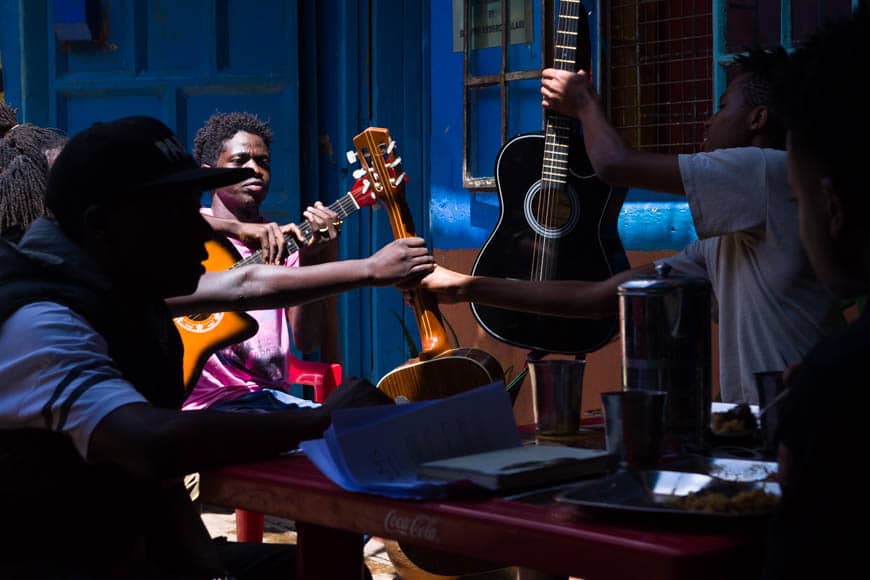

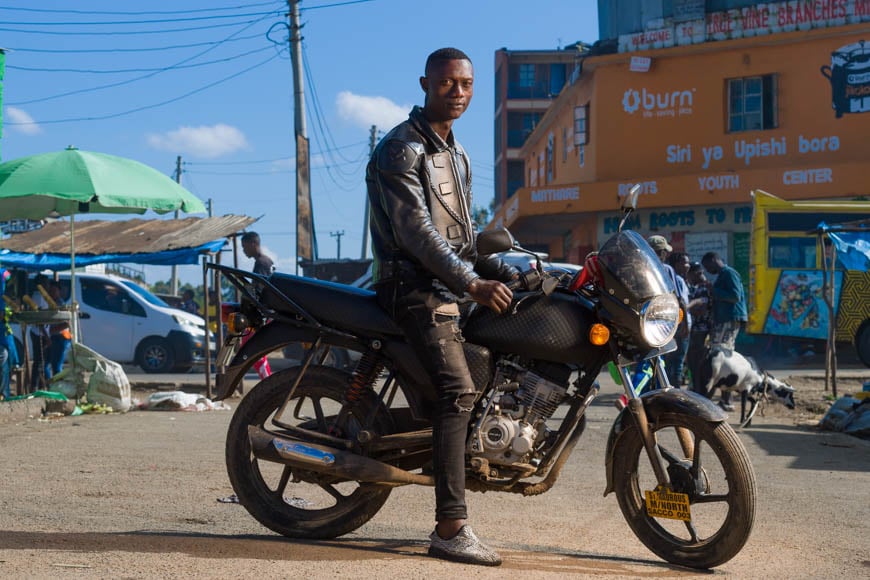
Alex MacNaughton
Photojournalism | Last Updated: April 9, 2021
Shotkit may earn a commission on affiliate links. Learn more.
Hi, I’m Alex MacNaughton. I decided to become a press photographer in the mid ’90s after visiting a Don McCullin exhibition and naively lunged headfirst into becoming a newspaper photographer.
Luckily, I got an early break covering the fledgling anti-roads environmental movement in the UK. This got my foot in the door at some national newspapers. Eventually, I spent about five years freelancing for the London Evening Standard.
One day the newspaper stopped ringing, so I started doing a lot of corporate photography. I was recommended to a book publisher and they commissioned me to photograph four books – three on street art in London and one about tattooing. Combined the books sold about 65,000 copies.
I’ve also done stills photography on TV and film productions and work for NGO’s.
I moved to Nairobi, Kenya in 2019, after 25 years in London, to start a new life with my partner.
The heart of my kit is still a classic newspaper photographer set up but one that’s been rather corrupted by a lighting fetish.
Cameras
My two Nikon D5’s are my main cameras. They are solidly built, have great focusing, ISO performance and battery life. It’s an absolute workhorse of a camera. Both my cameras are fitted with two 64GB Sony XQD cards, and I shoot everything RAW.
I prefer to use my Nikon D850 when I know that I’m not going to shoot a lot. The problem I find with the D850 is the file size, which for me leads to editing quagmires and storage bottlenecks. So I use it mostly for portrait photography. Additionally, I’m using it to digitise my film library and find that it creates great ‘scans’ despite my hodgepodge set up!
Lastly, I have a Sony 6500 fitted with a Vario-Tessar T* E 16-70 mm F4 ZA OSS not shown as I had to shoot my kit with something. It’s my daily carry camera and I’ve started experimenting shooting video with it. I’m not really a fan of the Sony 6500. The system menu is mind boggling and unintuitive and I always seem to end up fighting with it to capture the photos I want. I find shooting video with it a more pleasurable experience.
Lenses
Nikon 17-35mm f/2.8 ED – I bought this lens secondhand many years ago and have had it repaired a few times. It’s my go to lens for covering any live news events even though it’s rather soft in the corners.
Nikon 24-70mm f/2.8G ED – Not a lens I use that much but you’ve got to have one in your bag. I tend to use it more when I have some control over the situation eg. environmental portraits.
Nikon 70-200mm f/2.8G II ED – Another must have lens for news work.
This Trinity of Lenses forms the foundation of many a press photographer’s kit.
Nikon 85mm f/1.4D – Another secondhand purchase. I’ve used this lens for many portrait shots as I often have to set up in a small room, and I’ve found a 100mm lens can be slightly tight and using a 70-200 is rather intimidating to the subject.
Nikon 300mm f/4 E PF ED – I got this lens when I started working for a wire agency and needed more reach. It’s small, light, and sharp, but I have noticed that out-of-focus backgrounds can look rather ‘swirly’.
Nikon AF-S Teleconverter TC-14E III 1.4 – Always handy to have in the bag. It works well on 70-200 or 300 without too much loss of quality.
Nikon Micro-NIKKOR 105mm f/2.8 G IF-ED – Another secondhand purchase. Never know when you’ll need to shoot something small, though it’s not a daily carry.
Lighting
I’ve got a couple of Nikon Speedlight SB-900, they’re old but still working. I have a LumiQuest bounce card which when you’re in a rush does a good job softening the light.
Sekonic Flash Master L-358 – I know some people say you no longer need a light meter, but I still think they’re really useful, as the camera LCDs can be misleading at times.
When I was based in London, I had a basic lighting set up for many years; an Elinchrom Style 600s Flash Head, two softboxes, a Chimera Super Pro Plus Shallow Medium and a Chimera Pro II small. I could always hire extra lights. With my move to Nairobi, I decided to invest in more lighting.
I went down the Profoto route as I had previously used their lights to shoot one of my books, ‘London Tattoos’. I liked the simplicity of the controls and the way modifiers fit the heads, which is super simple. Apart from the Profoto B1X head and the Nikon Air Remote TTL, I managed to get all the other heads and modifiers secondhand.
I have two battery powered Profoto flashes a B1X and B1. The B1X is the upgraded version of B1 but you can get almost the same features on the B1 by upgrading its firmware.
Three Profoto D2 1000 AirTTL mains powered flashes.
Profoto light modifiers, 2 x RFi Softbox Strip 1×4’, 5′ Octa, and a Giant Reflector 7f which I got for £150 but then had to get a case for it which cost a fortune! A beauty dish with a grid, HR Lantern 4′ Flat and a selection of speedrings of various vintages.
Remotes, 1 x Profoto Nikon Air Remote TTL is an absolute work of genius! A Profoto Air Remote and a couple of Profoto Air Syncs. Having a way to fire flashes remotely is the first step to improving your flash photography, even when using the humble speedlight.
I have a complete set of secondhand California Sunbounce reflectors from the Micro-Mini 60 x 90 cm to the big 180 x 245 cm and various covers and silks to fit them. They take more work to put together than the pop-up reflectors, but once they are set up they’re nice and flat and rigid and don’t collapse in the wind like the pop-up ones can.
I have a number of light stands, clamps and other grip equipment. My light stands range from a Manfrotto Nano stand for speedlights in a small softbox, up to three C stands with turtle bases for heavy modifiers. Two are Matthews stands and the other an Avenger. I also have a Matthews mini boom. I have five Arri branded sandbags to keep everything weighed down which is super important.
Finally, on the lighting front, I have a set of Lee lighting filters and some Rosco cinefoil which is heavy black foil great for controlling light spill, and an x-rite colorchecker passport for working out the colour balance.
Bags
I use a range of bags and cases depending on the job. My main case is a Peli case 1510 in which I can fit all my core cameras, lenses and speedlights. The 1510 is accepted as carry-on on most airlines.
Then I have a Think Tank Shape Shifter backpack with a set of Skin Series pouches, for when I’m working on the street.
Shoulder bags – Domke F3, Domke J-803, and a Think Tank Retrospective 30.
Lighting bags – Lightware RC1038 Rolling Stand Bag 38, Think Tank Production Manager 50, Tenba Rolling Tripod/Grip Case 48-inch, Tenba Car Case CC22 for Beauty Dish and Peli 1560 case.
Tripods
Manfrotto 190 and a Gitzo G1349.
Hardware/Software
I have an old MacBook Pro but my main computer is a PC desktop running MacOS commonly know as Hackintosh and an Eizo ColorEdge CG277 screen.
Various external hard drives, the main ones being Caldigit AV Pro 2.
I use Adobe Lightroom for cataloging and editing, and I’m still on version 6 because I don’t want to pay Adobe a subscription fee. But I know the day will come when I’ll be forced to upgrade. I also use Photo Mechanic 6 which I find a much better program for captioning and keywording than Lightroom. I have an old version of Photoshop but rarely use it. And I run Carbon Copy Cloner to clone my computer daily.
I just started using a Behringer Xtouch Mini to control Lightroom via the Midi2LR plugin.
www.alexmacnaughton.com | @alexmacnaughton

Check out these 8 essential tools to help you succeed as a professional photographer.
Includes limited-time discounts.





